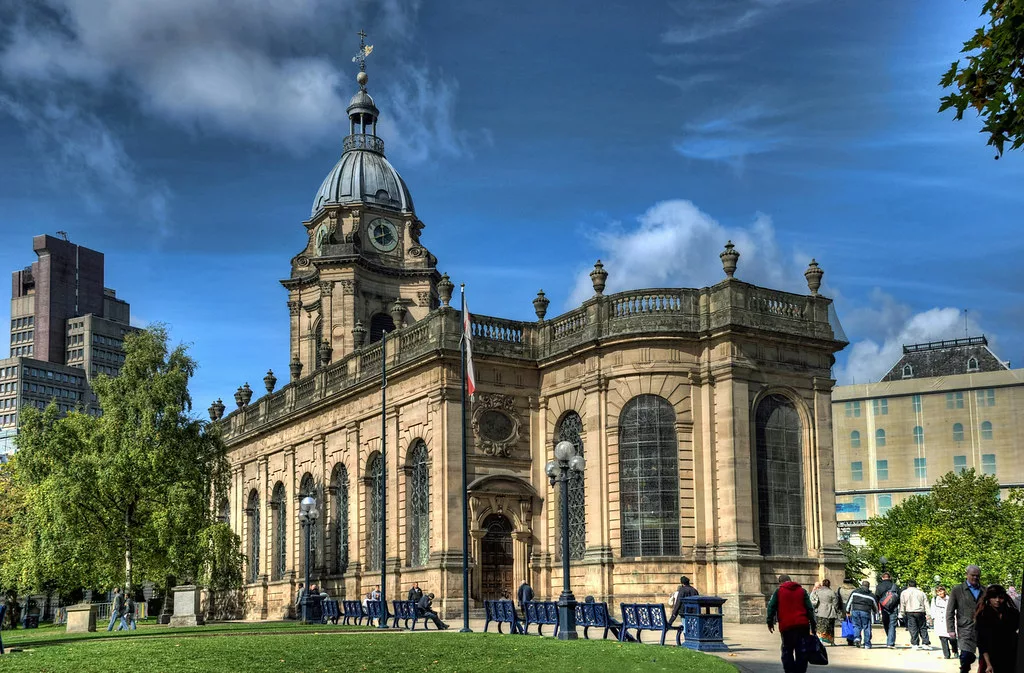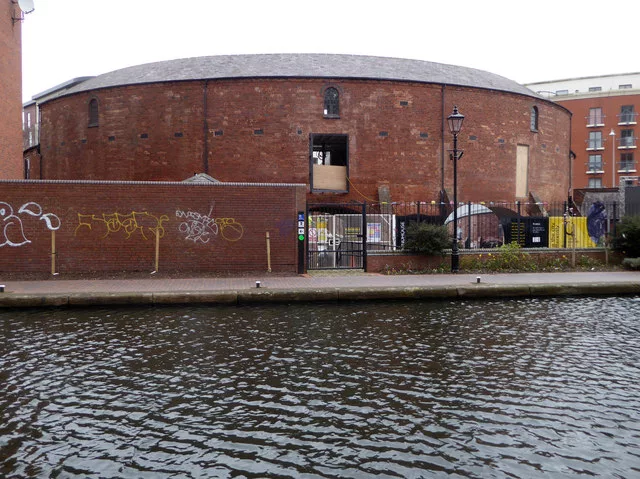
The Historical Gems: Exploring Birmingham’s Classic Architecture
Birmingham, with its rich history and cultural heritage, is home to a plethora of architectural gems that stand as a testament to the city’s past. From centuries-old buildings to well-preserved landmarks, exploring Birmingham’s classic architecture is an immersive journey into the city’s history.

One such gem is St. Philip’s Cathedral, a masterpiece of English Baroque architecture. Dating back to 1715, this magnificent cathedral stands tall with its stunning stained glass windows and intricately designed interior. Its iconic dome, inspired by St. Paul’s Cathedral in London, adds a touch of grandeur to Birmingham’s skyline. As you step inside, you can’t help but be in awe of the rich history that this architectural marvel holds, making it a must-visit for history enthusiasts and architecture aficionados alike.
Venturing further into Birmingham, one cannot miss Aston Hall, a striking Jacobean mansion nestled amidst scenic parkland.

Built in the early 17th century, this spectacular architectural gem showcases the luxurious lifestyle of the past. From its grand entrance hall to its opulent drawing rooms, each corner of Aston Hall exudes a sense of elegance and grandeur. With its well-preserved architecture and beautifully maintained gardens, visiting Aston Hall is like stepping back in time and immersing yourself in the opulence of the bygone era.
A Journey through Time: Birmingham’s Architectural Evolution
Birmingham’s architectural evolution has been a captivating story of transformation and progression. From its humble beginnings as a small market town in the medieval period to its status as a thriving industrial hub during the Victorian era, Birmingham’s buildings bear witness to the city’s rich history. The architectural styles found throughout the city reflect the changing tastes and aspirations of its residents over time.
In the early years, Birmingham’s architecture primarily consisted of timber-framed buildings, showcasing the traditional medieval design. As the city expanded and prospered, the architectural landscape underwent a remarkable shift. Georgian and Regency architecture began to dominate, with elegant terraces and rows of houses taking shape, reflecting a growing sense of civic pride. Churches and public buildings also embraced these architectural styles, lending the city a distinguished and sophisticated aesthetic.
Another notable landmark that draws the attention of architecture enthusiasts is the Library of Birmingham.

Designed by Francine Houben of the renowned architectural firm Mecanoo, this modern marvel stands as a symbol of the city’s dedication to knowledge and culture. The library’s striking contemporary design consists of overlapping metallic rings, reflecting its vision of connectivity and collaboration. Housing a vast collection of books, rare manuscripts, and digital resources, the Library of Birmingham has become a hub for learning and creativity, making it a true testament to the city’s commitment to education and innovation.
Another remarkable contemporary building in Birmingham is the ambitious Cube.

Designed by Ken Shuttleworth’s Make Architects, this towering structure has become an integral part of the city’s skyline. Its blend of glass, steel, and concrete creates a visually striking exterior that reflects the surrounding landscape and captures the essence of modern urban living. The Cube houses an array of residential, commercial, and recreational spaces, all meticulously crafted with a focus on sustainability and functionality. This mixed-use development is a testament to Birmingham’s commitment to creating thriving, livable spaces that cater to the needs of its residents and visitors alike.
In the heart of the city, these stunning examples of contemporary architecture not only elevate Birmingham’s skyline but also contribute to the city’s reputation as a thriving and forward-thinking metropolis. As these architectural marvels continue to attract attention and admiration, they serve as a reminder of the city’s ongoing commitment to innovation, creativity, and building a better future for both its residents and visitors. As Birmingham continues to evolve, it is certain that its contemporary architecture will play a pivotal role in shaping its identity for years to come.
The Influence of Industrial Revolution: Birmingham’s Industrial Architecture
During the Industrial Revolution, Birmingham experienced a significant transformation that shaped its architectural landscape. The city’s industrial architecture became a testament to its booming industrial sector, which thrived in the 18th and 19th centuries. Magnificent factories, warehouses, and workshops sprung up throughout the city, showcasing the city’s prowess in manufacturing and engineering.
One such example of Birmingham’s industrial architecture is the iconic Roundhouse.

Built in 1874, this historic building served as a locomotive engine repair shed. The Roundhouse is a stunning architectural marvel, featuring a circular structure with a glass roof that allows ample natural light to flood the space. The building has been repurposed over the years and is now a vibrant hub for creative businesses and cultural events, preserving its legacy while adapting to the changing needs of the city. Birmingham’s industrial architecture serves as a reminder of the city’s rich industrial heritage and its contributions to the development of the nation.
Birmingham’s Civic Pride: Magnificent Government Buildings and Institutions
Birmingham, the proud heart of England, boasts an array of magnificent government buildings and institutions that reflect its rich history and civic pride. These architectural gems stand as testaments to the city’s governance and administration, showcasing its importance on the regional and national stage.
One such remarkable landmark is the Birmingham Council House, an iconic symbol of political power and decision-making.

Designed in the classical style, this impressive building stands tall in Victoria Square, exuding grandeur and authority. Its imposing facade embellished with decorative columns and intricate sculptures mesmerizes visitors, inviting them to delve deeper into the city’s governing processes. Inside, the Council Chamber offers a glimpse into the city’s democratic workings, with lively debates and discussions shaping policies that impact the lives of Birmingham’s residents.
Adjacent to the Council House, the Birmingham Museum and Art Gallery stands as a cultural institution that highlights the city’s dedication to preserving knowledge and artistic expression.

This magnificent Victorian building houses an extensive collection of art, archaeology, and natural history. From stunning national and international exhibitions to the distinctive Pre-Raphaelite paintings, this institution showcases the evolution of human creativity and intellect. The museum not only offers a journey through time but also embodies Birmingham’s commitment to education and cultural enrichment, evoking a sense of pride within visitors and residents alike.
